Find aDomain Search Powered byGoDaddy.com ...
When you find potential franchise buyers, you will need to examine their proposed location for the market feasibility of your business.
We earn commissions if you shop through the links below. Read more
Written by: Carolyn Young
Carolyn Young has over 25 years of experience in business in various roles, including bank management, marketing management, and business education.
Published on November 12, 2021
Updated on September 22, 2022

Investment range
$18,650 - $83,200
Revenue potential
$575,000 - $1.2 million p.a.
Time to build
3 - 6 months
Profit potential
$200,000 - $475,000 p.a.
Industry trend
Growing
Commitment
Full-time
If you have a successful small business, you may be thinking of ways to grow your company. One option is to franchise your business, enabling you to open new locations without spending too much capital. If you have a business that’s doing well and you think your model is replicable, then starting a franchise may be the right option for you.
Starting a franchise, however, takes a lot of work. The key is to have the necessary knowledge before you launch, in order to avoid the common pitfalls. This step-by-step guide will help you turn your business into a successful franchise.

Starting a franchise requires time and effort. You will be taking a significant risk, so educating yourself is critical before making the decision to launch your business.
Every business has its pros and cons. You will need to weigh these factors to decide if starting a franchise is your best choice. Here are some basic pros and cons of starting and running a franchise.
Fastfood restaurants represent the franchise market’s largest segment, followed by business services, full-service restaurants, real estate, and commercial and residential services.
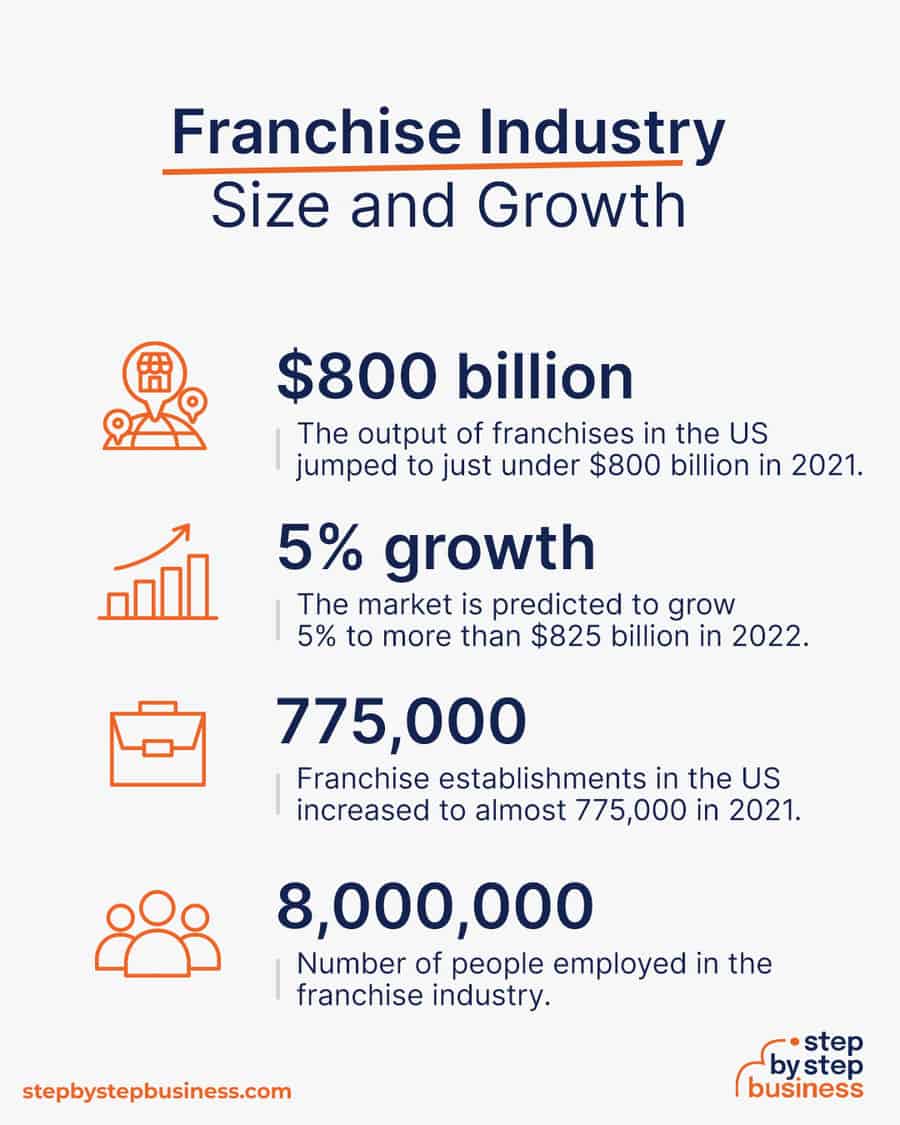
Franchising trends include:
Challenges in the franchise industry include:
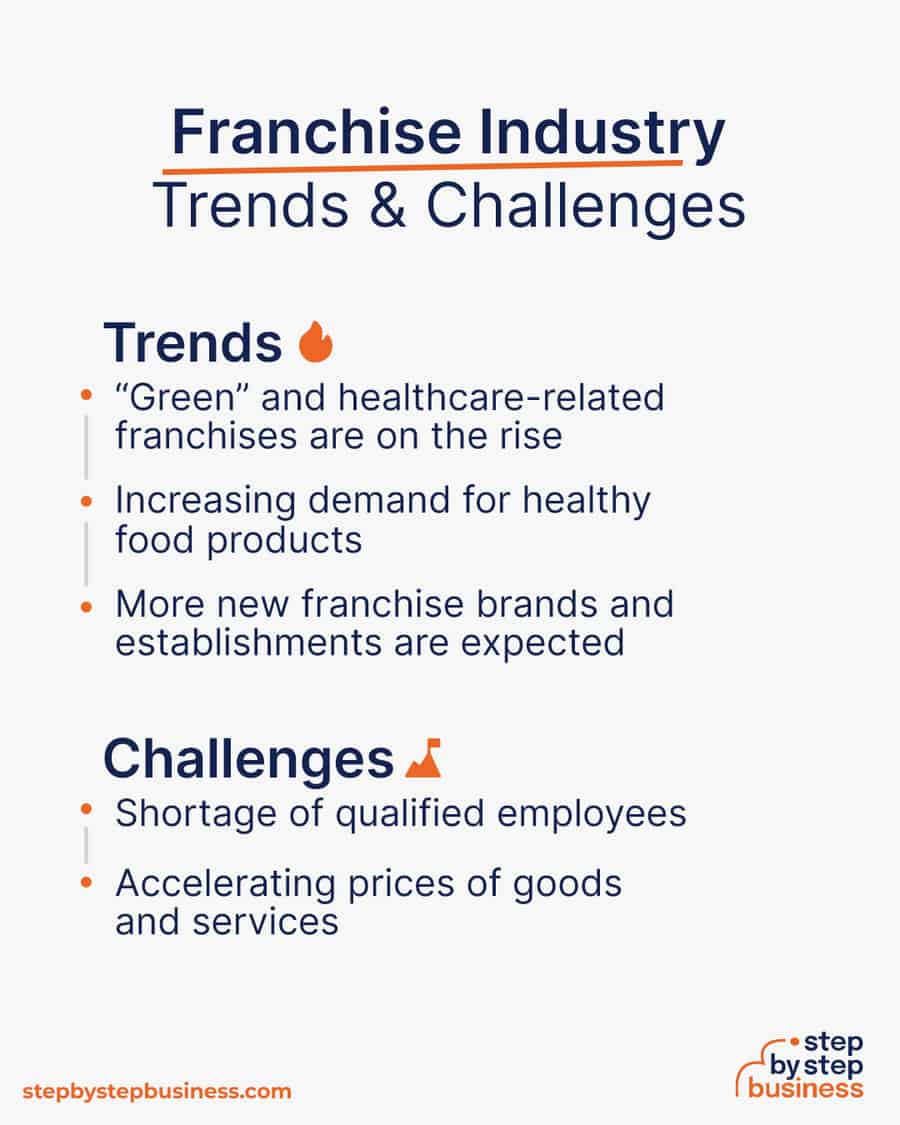
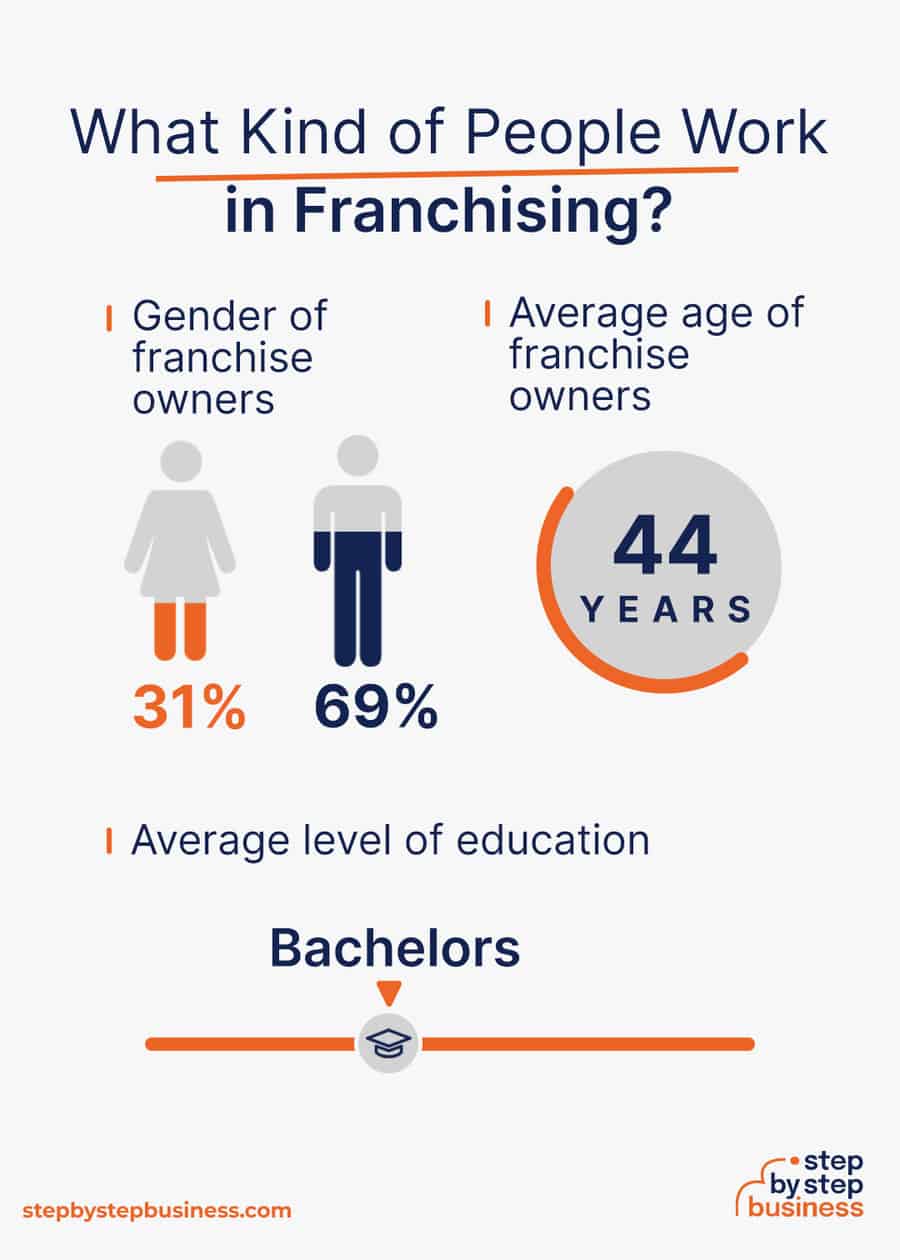
The startup costs for a franchise range from around $18,000 to $85,000, with the primary expense being the one-time preparation of franchise documents and operations manual. This cost may seem high, but franchise documents are specific and extensive and require significant legal advice and guidance, while the operations manual is a very detailed guide to setting up and running franchises.
Both are crucial to the success of your franchise and must be done right. Keep in mind, these costs will only be incurred once, as the documents and manual will be used every time you sell a franchise.
| Startup Costs | Ballpark Range | Average |
|---|---|---|
| Franchise Disclosure Document (FDD) development legal fees | $15,000 - $45,000 | $30,000 |
| Operations manual development | $0 - $30,000 | $15,000 |
| Start a new business entity name registration and entity formation | $150 - $200 | $175 |
| Financial statement preparation for FDD | $2,500 - $5,000 | $3,750 |
| Trademark and FDD registration per state | $1,000 - $3,000 | $2,000 |
| Total | $18,650 - $83,200 | $50,925 |
Your profit will depend on how many franchises you operate and how much revenue each generates, which means it’s very hard to predict. The franchise fee, which the franchisee pays to you, the owner or franchisor, varies widely depending on the type of business, but generally ranges from $75,000 to $200,000, according to industry advisor Franchising.((https://www.franchising.com/guides/the_cost_of_opening_a_franchise.html)) Monthly royalties paid to you by the franchisee usually range from 4-8% of the franchisee’s revenues.
The franchisor’s costs to launch a new franchise — including training, support, location selection, marketing, and payroll for your franchise development team — should come to about 75% or three-fourths of the franchise fee. So if your franchise fee is $100,000, after expenses your profit will be $25,000, or a 25% margin.
Let’s say you sell five franchises for $100,000 each, and each franchise sees $250,000 in annual revenue and sends you 6% in royalties. You’d receive $15,000 in royalties from each franchisee, or $75,000 in combined annual royalties, and $575,000 in total. Since you’ll keep 25% of the franchise fees after startup costs, your profit will be $125,000 from the franchise fees plus $75,000 in royalties, for a total of $200,000.
As your brand gains popularity, you might be able to sell 10 more franchises, bringing in additional $1 million in franchise fees and $150,000 in royalties. You’d now be receiving total royalties of $225,000. Including the additional $250,000 profit from the sale of the additional 10 franchises, you’d be making a cool $475,000.
The more franchises you sell and the bigger their earnings, the bigger the royalties and total profit.
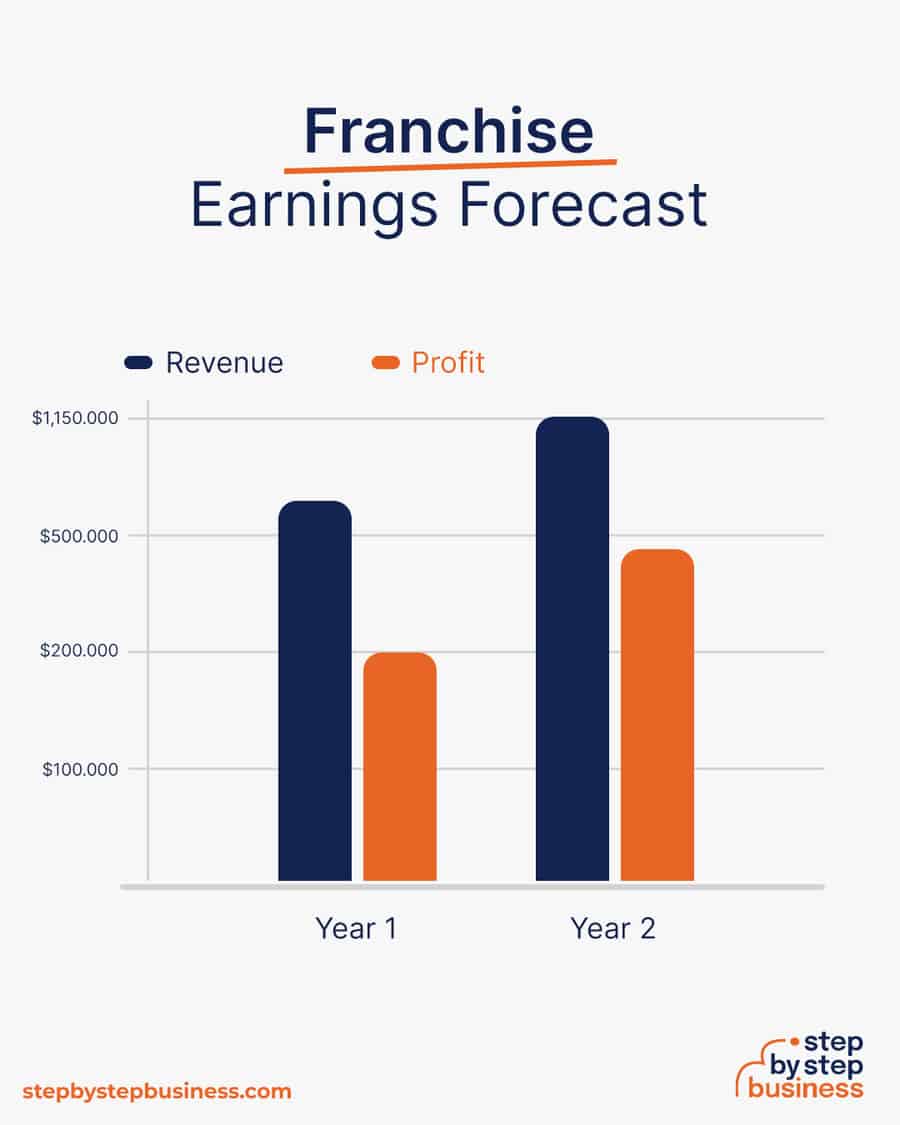
There are several barriers to entry for a franchise. Your biggest challenges will be:

Now that you know what’s involved in starting a franchise, it’s a good idea to hone your idea in preparation to enter a competitive market.
You need to know that your business is replicable and that there is a big enough market to support your franchise. If you are the business, meaning that the business is dependent on your work, it’s probably not replicable. Replicable means that your business as it exists now has a formula for success that can be followed, and that your brand can expand.
When you find potential franchise buyers, you will need to examine their proposed location for the market feasibility of your business.
You may want to target buyers in areas where you are certain there’s a market, such as places where a market gap exists for your products or services.
When you draft your Franchise Disclosure Document, it will specify exactly what kind of support you will offer your franchisees and for what fee. In addition to the initial franchise fee, you may require a periodic franchise fee to support marketing, sales, operations, training, and other services.
Developing a thorough model will give your franchises the best chance of success, and your best chance of maximizing your revenue.
Franchise fees, which range from $10,000 to more than $5,000,000, will depend on your type of business. You may want to research your industry to learn about its typical franchise fees — both the initial fee and ongoing fees. Royalties are more standard, usually between 4-8%, though they also vary by industry.
Once you know your costs, you can use this Step By Step profit margin calculator to determine your mark-up and final price points. Remember, the prices you use at launch should be subject to change if warranted by the market.
Your target market will be people who want to own a business but do not want to start from scratch, and who believe in your business model. Millennials represent the fastest-growing segment of franchise buyers, but you also need to look at who might be the target buyer for your particular type of business. Those people may have similar characteristics to your customers.
For example, if you have a shoe store that targets a younger demographic, your potential franchise buyers will probably fall in the sale age group. You can target your franchise advertising to the same places that you target your customer marketing – perhaps platforms like Instagram and TikTok.
In the early stages, you may want to operate your franchise from home or your current business location to keep expenses relatively low. But as your business grows you’ll likely need to hire workers for various roles, particularly a franchise development team, and rent out an office or storage facility. You can find commercial space to rent in your area on Craigslist, Crexi, and Commercial Cafe.
When choosing a commercial space, you may want to follow these rules of thumb:
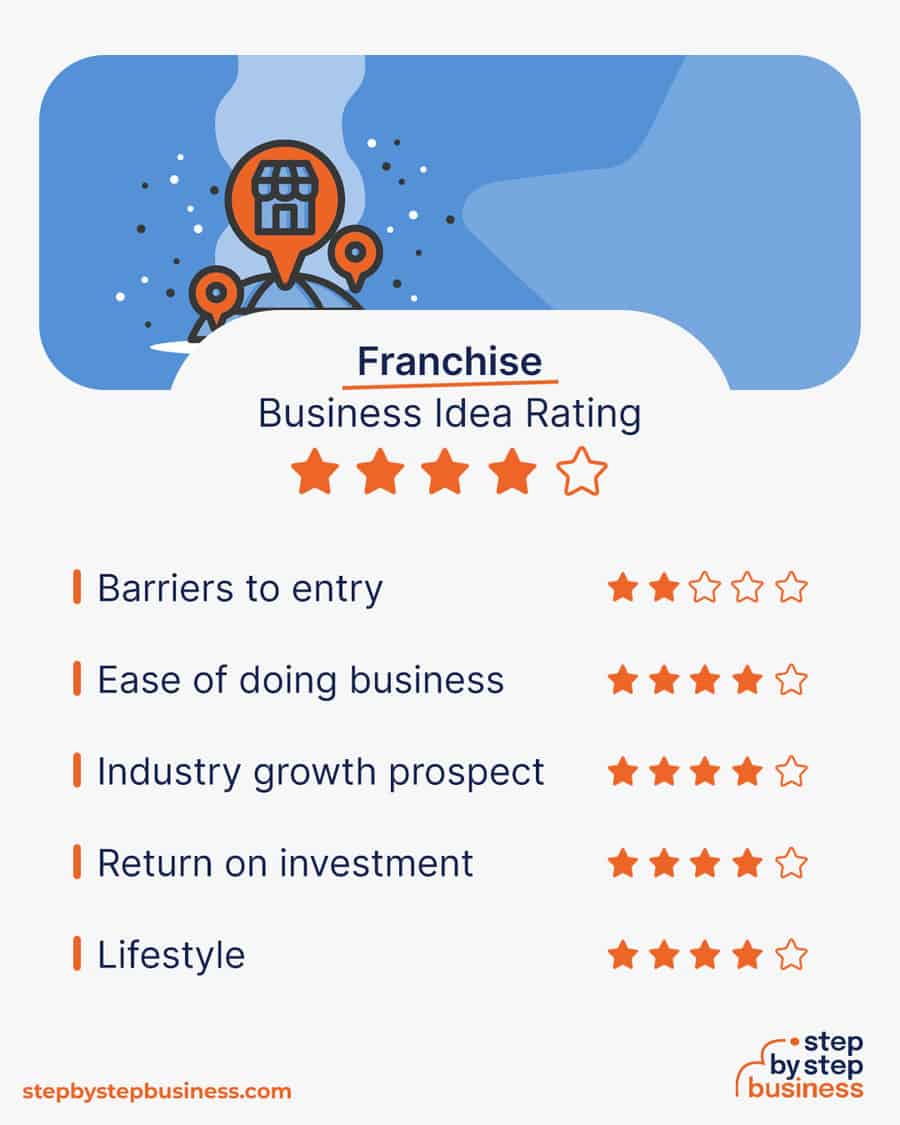

Your business name is your business identity, so choose one that encapsulates your objectives, services, and mission in just a few words. You probably want a name that’s short and easy to remember, since much of your business, and your initial business in particular, will come from word-of-mouth referrals.
Once you’ve got a list of potential names, visit the website of the US Patent and Trademark Office to make sure they are available for registration and check the availability of related domain names using our Domain Name Search tool. Using “.com” or “.org” sharply increases credibility, so it’s best to focus on these.
Finally, make your choice among the names that pass this screening and go ahead with domain registration and social media account creation. Your business name is one of the key differentiators that set your business apart. Once you pick your company name, and start with the branding, it is hard to change the business name. Therefore, it’s important to carefully consider your choice before you start a business entity.
Every business needs a plan. This will function as a guidebook to take your startup through the launch process and maintain focus on your key goals. A business plan also enables potential partners and investors to better understand your company and its vision:
If you’ve never created a business plan, it can be an intimidating task. You might consider hiring a business plan specialist at Fiverr to create a top-notch business plan for you.

Registering your business is an absolutely crucial step — it’s the prerequisite to paying taxes, raising capital, opening a bank account, and other guideposts on the road to getting a business up and running.
Plus, registration is exciting because it makes the entire process official. Once it’s complete, you’ll have your own business!
Your business location is important because it can affect taxes, legal requirements, and revenue. Most people will register their business in the state where they live, but if you are planning to expand, you might consider looking elsewhere, as some states offer real advantages when it comes to franchising.
If you’re willing to move, you could really maximize your business! Keep in mind, it’s relatively easy to transfer your business to another state.
Business entities come in several varieties, each with its pros and cons. The legal structure you choose for your franchise will shape your taxes, personal liability, and business registration requirements, so choose wisely.
Here are the main options:
We recommend that new business owners choose LLC as it offers liability protection and pass-through taxation while being simpler to form than a corporation. You can form an LLC in as little as five minutes using ZenBusiness’s online LLC formation service. They will check that your business name is available before filing, submit your articles of organization, and answer any questions you might have.

The final step before you’re able to pay taxes is getting an Employer Identification Number, or EIN. You can file for your EIN online or by mail or fax: visit the IRS website to learn more. Keep in mind, if you’ve chosen to be a sole proprietorship you can simply use your social security number as your EIN.
Once you have your EIN, you’ll need to choose your tax year. Financially speaking, your business will operate in a calendar year (January–December) or a fiscal year, a 12-month period that can start in any month. This will determine your tax cycle, while your business structure will determine which taxes you’ll pay.
The IRS website also offers a tax-payers checklist, and taxes can be filed online.
It is important to consult an accountant or other professional to help you with your taxes to ensure you are completing them correctly.
Securing financing is your next step and there are plenty of ways to raise capital:
Bank and SBA loans are probably the best option, other than friends and family, for funding a franchise business.


Starting a franchise business requires obtaining a number of licenses and permits from local, state, and federal governments.
Federal regulations, licenses, and permits associated with starting your business include doing business as (DBA), health licenses and permits from the Occupational Safety and Health Administration (OSHA), trademarks, copyrights, patents, and other intellectual properties, as well as industry-specific licenses and permits.
You may also need state-level and local county or city-based licenses and permits. The license requirements and how to obtain them vary, so check the websites of your state, city, and county governments or contact the appropriate person to learn more.
You could also check this SBA guide for your state’s requirements, but we recommend using MyCorporation’s Business License Compliance Package. They will research the exact forms you need for your business and state and provide them to ensure you’re fully compliant.
This is not a step to be taken lightly, as failing to comply with legal requirements can result in hefty penalties.
If you feel overwhelmed by this step or don’t know how to begin, it might be a good idea to hire a professional to help you check all the legal boxes.
Before you start making money you’ll need a place to keep it, and that requires opening a bank account.
Keeping your business finances separate from your personal account makes it easy to file taxes and track your company’s income, so it’s worth doing even if you’re running your franchise business as a sole proprietorship. Opening a business bank account is quite simple, and similar to opening a personal one. Most major banks offer accounts tailored for businesses — just inquire at your preferred bank to learn about their rates and features.
Banks vary in terms of offerings, so it’s a good idea to consider your options to choose the best plan that works for you. Once you choose your bank, you’ll need to bring your EIN (or Social Security Number if you decide on a sole proprietorship), articles of incorporation, and any other legal documentation that proves your business is registered.
Business insurance is an area that often gets overlooked yet is vital to your success as an entrepreneur. Insurance protects you from unexpected events that can have a devastating impact on your business.
Here are some types of insurance to consider:


As opening day nears, prepare for launch by reviewing and improving some key elements of your business.
Being an entrepreneur often means wearing many hats, from marketing to sales to accounting, which can be overwhelming. Fortunately, many websites and digital tools are available to help simplify many business tasks.
Take advantage of services, such as Naranga, Chetu, and FranchiseSoft, to simplify franchisee and operations management and oversee online training.
Some of your business will come from online visitors, but still, you should invest in digital marketing! Getting the word out is especially important for new businesses, as it’ll boost customer and brand awareness.
Once your website is up and running, link it to your social media accounts and vice versa. Social media is a great tool for promoting your business because you can create engaging posts that advertise your products:
Take advantage of your website, social media presence, and real-life activities to increase awareness of your offerings and build your brand. Some suggestions include:
Website development is crucial because your site is your online presence and needs to convince prospective clients of your expertise and professionalism. They are unlikely to find your website, however, unless you follow Search Engine Optimization (SEO) practices. These are steps that help pages rank higher in the results of top search engines like Google.
You can create your own website using services like WordPress, Wix, or Squarespace. This route is very affordable, but figuring out how to build a website can be time-consuming. If you lack tech-savvy, you can hire a web designer or developer to create a custom website for your business.
Unique selling propositions, or USPs, are the unique characteristics of a product or service that set it apart from the competition. Customers today are inundated with buying options, so you’ll have a real advantage if they are able to quickly grasp how your franchise meets their needs or wishes. It’s wise to do all you can to ensure your USPs stand out on your website and in your marketing and promotional materials, stimulating buyer desire.
Global pizza chain Domino’s is renowned for its USP: “Hot pizza in 30 minutes or less, guaranteed.” Signature USPs for your franchise business could be:

You may not like to network or use personal connections for business gain. But your personal and professional networks likely offer considerable untapped business potential. Maybe that Facebook friend you met in college is now running a franchise business, or a LinkedIn contact of yours is connected to dozens of potential clients. Maybe your cousin or neighbor has been working in franchising for years and can offer invaluable insight and industry connections.
The possibilities are endless, so it’s a good idea to review your personal and professional networks and reach out to those with possible links to or interest in franchises. You’ll probably generate new customers or find companies with which you could establish a partnership. Online businesses might also consider affiliate marketing as a way to build relationships with potential partners and boost business.

If you’re maintaining a home-based office, your new franchise may not need any new employees. But as your business grows, you will likely need workers to fill various roles. Potential positions for a franchise business would include:
At some point, you may need to hire all of these positions or simply a few, depending on the size and needs of your business. You might also hire multiple workers for a single role or a single worker for multiple roles, again depending on need.
Free-of-charge methods to recruit employees include posting ads on popular platforms such as LinkedIn or Facebook. You can also use free classified sites like Jobs and AngelList. You might also consider a premium recruitment option, such as advertising on Indeed, Glassdoor, or ZipRecruiter. Further, if you have the resources, you could consider hiring a recruitment agency to help you find talent.

Franchising is a great way to expand your business, achieve greater market presence, and further strengthen your brand. You’ll be helping other entrepreneurs start a lucrative business too. Your support for your franchisees does not stop at the launching of their stores. You’ll be expected to provide ongoing assistance, further promote your brand through an aggressive marketing campaign, address supply chain issues, and more.
With adequate preparations, you’re now ready to take your business to the next level. If you do this right, you could easily sell your concept and expand your business to become the next McDonald’s! Good luck!
Costs generally range from $18,000 to $85,000, as you’ll need special documents drafted by an attorney, including an operations manual, which you could create internally to cut costs.
Franchising can be very profitable if you’re successful. You receive fees from the purchase of your franchise and ongoing royalties. Annual profits can be $200,000 to $350,000 or more.
Any successful business with a replicable model can be franchised. It just takes capital and a franchise development team to manage the process.
It is highly recommended that you have an attorney that specializes in franchising to help you. They can help draw up important franchise documents without any gray areas and review other documents during the franchise development process.

Published on August 16, 2023
Find aDomain Search Powered byGoDaddy.com ...
Read Now

Published on March 16, 2023
Lorem ipsum dolor sit amet, consectetur adipiscing elit, sed do eiusmod tempor incididunt ut labore et dolore magna aliqua. Ut enim ad minim veniam, ...
Read Now

Published on March 10, 2023
When to Use Paychex Flex When to Use QuickBooks Payroll ...
Read Now
No thanks, I don't want to stay up to date on industry trends and news.
Comments